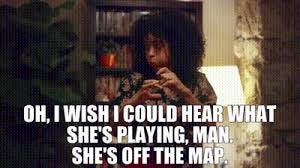Breaking down John Calipari's dribble drive offensive system
Video Essay Part I: Top Penetration
When Eric Musselman was fired at Arkansas, one of my hopes in finding a head coaching replacement was that the next coach would run an intricate offensive system. Eric Musselman’s offensive approach felt like rolling the ball out there and letting players play. While John Calipari will never be confused for Tex Winter, Arkansas Razorbacks fans can expect to see some semblance of a unified offensive approach, even if it still relies heavily on improvisation.
Rooted in relentless attacking and fluid ball movement, the dribble-drive offense offers a dynamic approach to scoring that can overwhelm even the most stalwart defenses. In this multi-part comprehensive guide, we delve into the intricacies of the dribble-drive offense, exploring its principles, key components, and strategies for success—all with video clips.
Understanding the backbone of Calipari’s dribble-drive offense
The dribble drive offense, at its core, emphasizes penetration, spacing, and constant motion. Unlike traditional offenses that rely on set plays and structured movement, the dribble drive thrives on spontaneity and improvisation.
But much like jazz improvisation, some rules and structures still frame the player's freedom to explore. Players are encouraged to drive aggressively to the basket, forcing defenders to collapse and creating scoring opportunities for themselves or their teammates.
Here are some critical Components of the Dribble-Drive Offense:
Spacing: Proper court spacing is central to the dribble-drive offense. Players must spread out to create driving lanes and passing angles, stretching the defense and opening up opportunities for penetration.
Calipari is fond of using a 4-out 1-in setup, in which the big inside the arc always stays on the weak side (image below). Defenses typically coach that help should come from the low man weak side, which makes it easy for the big in Calipari’s offense to get some cherry-picked buckets as the ballhandler puts pressure on the rim.
Dribble Penetration: The primary objective of the dribble drive offense is to attack the basket off the dribble. Ball handlers look to beat their defenders off the bounce, forcing help defenders to rotate and creating scoring chances for themselves or their teammates. (This is what our videos will focus on today.)
Kickouts and Drive-and-Kick: When a player drives to the basket and draws multiple defenders, they look to kick the ball out to open shooters on the perimeter. This drive-and-kick action puts immense pressure on the defense and often leads to high-percentage scoring opportunities from beyond the arc.
Read and React: Unlike rigidly structured offenses, the dribble drive relies on players reading the defense and reacting accordingly. Players must make split-second decisions based on how defenders react to dribble penetration, whether to finish at the rim, kick out to an open shooter, or make an extra pass to a teammate.
The first option in Calipari’s dribble-drive offense
Good improvisers don’t get lost in thought. They aren’t in their heads. They are incredibly attuned to the present moment, and they simply react to what is happening around them. First thought, best thought is the mantra.
In the dribble-drive offense, that first thought is always for the ball handler in the slot to attack the rim off the dribble. The initial goal is to get to the hoop, and either score themselves or dish to the big man if the help is successful in cutting off their driving lane.
As the ballhandler pushes toward the rim, the player from the strongside corner moves up to fill in the gap left by the ballhandler. If neither shot is open at the rim, the player can use that as a release valve for a catch-and-shoot three.
When the ball handler kicks back out, that player could also put the ball on the floor and attack the rim themselves. This might happen if the defender is closing out aggressively, if they’re a poor shooter, or if the defense left them an open driving lane.
The final option for the ballhandler in top penetration is to reverse pivot and toss the ball back out to the slot where the entire cycle starts over again.
Next time we’ll dive into another facet of this offense: the slot-to-slot pass and cut.




